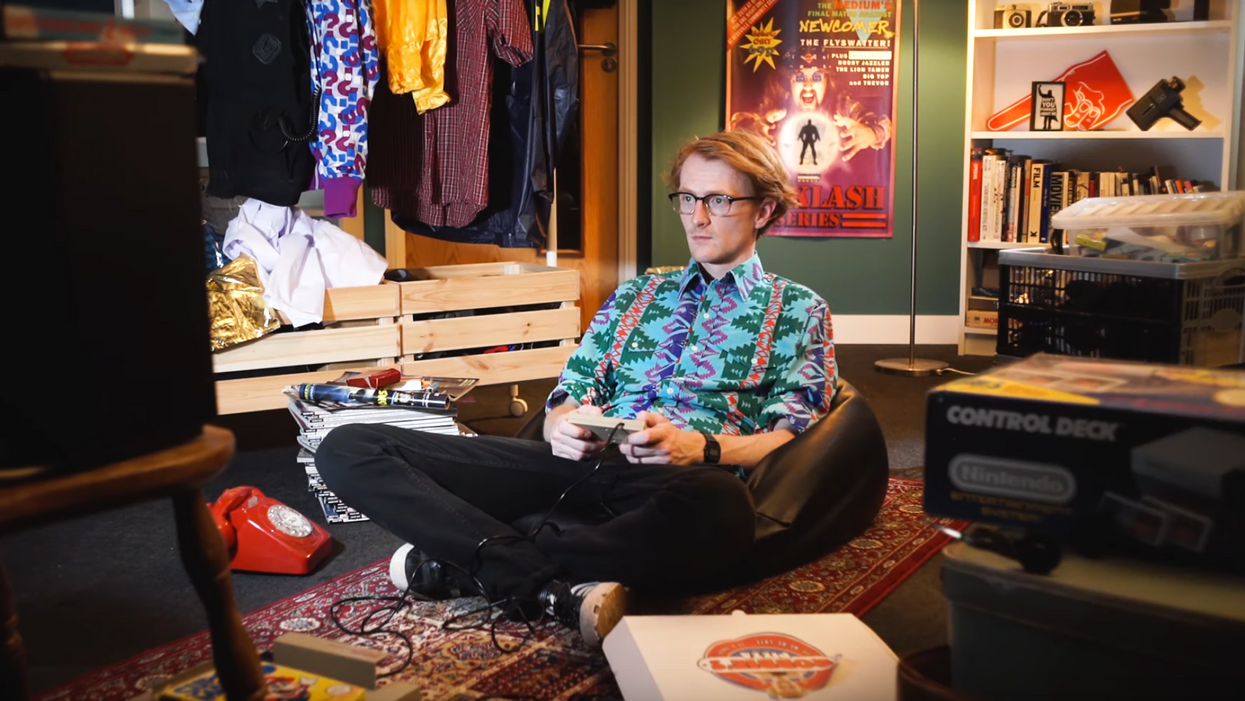Watch How You Can Make Your Movie Look More Cinematic
To give your sets the perfect cinematic look, you might want to think messy.

In filmmaking, no one likes the look of a sterile set that has no personality or clutter. I see this a lot as a festival screener and can pick out immediately when a team might have skimped on set design.
Usually the filmmakers are utilizing a rented house or apartment, and all they've done is added some family photos in the background. The rest of the place looks like a hotel room. It feels sterile and unrealistic.
Really, for a more authentic backdrop, the filmmakers should be making a mess.
The team over at The Film Look has put together some easy tips for making your work look more real and more cinematic. Check out their video below.
Start with the script
When you're handed a project, you might be given a basic description or slugline like "INT. BASEMENT - NIGHT." Then you're given the characters involved and hopefully what they're doing.
In this case, the character is playing a video game. Put your actor in front of a video game system in a basement room. But then you've got all that empty space. Don't just leave it -- play with it.

Placement of objects
The video had some practical things to consider, like hiding an out-of-place door that didn't feel right for the scene. They wheeled a clothing rack in to conceal it, but you could do the same with a dressing screen or shelving unit.
If you have some cables you need to hide, you can do the same thing with other props to hide them.
They also noticed a blank wall, so they hung a poster. Unless you're specifically going for a lot of negative space and empty walls, this is one thing that's really noticeable in film and can be fixed easily. Most people hang art, so have some posters and paintings on hand.
Floors are another set element that can easily feel boring and blank. Consider throwing down a rug to add color and pattern variation.
You can also create a kind of natural vignette or frame by placing objects at the edges of your shot, which is what they did here.
Things to consider
You'll want to place objects that are appropriate for the tone and time period of your project. In this video, they were going for a Stranger Things vibe, so they grabbed a bunch of props that felt like they came from the 1980s.
But if you're shooting, say, a horror film, you're probably not going to go for Breakfast Club paraphernalia. Try gritty black-and-white photos, an animal skull your character may have picked up, or some books about serial killers.
Also remember that your sets are going to be a reflection of your character's personality and interests. Are they a young child? They might have a lot of toys. Do they love space? Grab some of those glow-in-the-dark ceiling stars.

The lighting
The key light in this shot is the TV itself, coupled with an LED effects light that could be set to pulse, mimicking the TV flicker. They also added a lamp in the background for some additional practical lighting.
Working from these practicals, they added a couple of additional lights, one pointed at the subject and another at the ceiling, in order to increase the ambience of the set overall.
Remember that you can build your lighting set-ups around practical lighting for natural-looking scenes. Have in mind where your light source is, and work around that.
What's next? Learn more about dressing sets
Check out some of our popular tips for working with props and how to dress a set. Then make sure you know 13 essential techniques for lighting a film set. Finally, if you want to build a set of your own, try working in your garage.
What are your go-to methods for dressing your sets? Let us know in the comments!
Source: The Film Look











